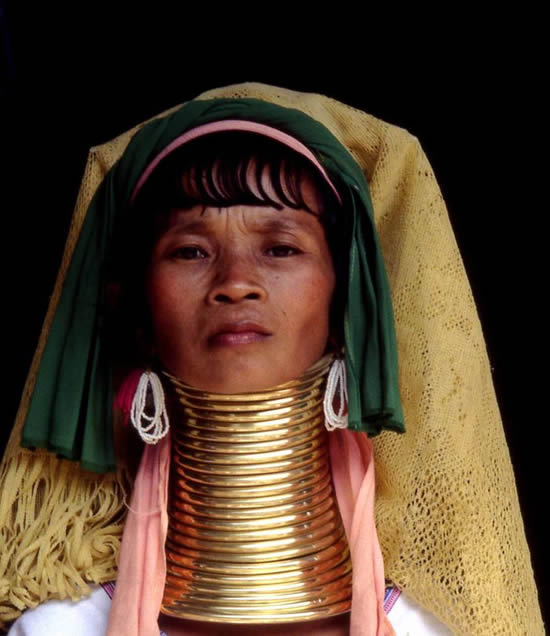The longest human necks extend to 7 7 inches belonging to women in the padaung tribe in the highlands of northwestern thailand

The Fascinating World of the Padaung Tribe: Human Necks Extending to 7.7 Inches

Did you know that the longest human necks ever recorded extend up to a remarkable 7.7 inches? Surprisingly, this distinctive feature is not found among people from all over the world, but rather among the women of the Padaung tribe residing in the highlands of northwestern Thailand.
The Padaung tribe, also known as the Karen or Kayan tribe, is renowned for their extraordinary body modifications, with the elongation of the female neck being one of their most prominent and distinctive attributes. This intriguing cultural practice has attracted fascination and curiosity from people all around the globe.
The Origins of the Padaung Tribe Neck Elongation Tradition

The tradition of elongating the necks of Padaung women is believed to have originated centuries ago and has been passed down through generations. Young girls traditionally begin wearing brass rings around their necks between the ages of five and seven. Additional rings are gradually added, compressing the shoulder and rib cage downward and causing the appearance of an elongated neck.
The Cultural Significance
For the Padaung tribe, the elongated neck symbolizes beauty, status, and wealth. It is believed that the longer the neck, the more attractive a woman is perceived to be within their community. The neck rings also serve as a symbol of wealth, as the brass used to make them is considered valuable.
The practice of lengthening their necks is deeply ingrained in the Padaung culture, and the women wear the rings throughout their lives. Despite the physical challenges and discomfort associated with the weight of the rings, the women embrace this tradition as an essential part of their identity and cultural heritage.
The Untold Health Implications
While the elongated necks of Padaung women may be a marvel to behold, it is important to consider the potential health implications that accompany this practice. The weight of the rings, which can reach up to 25 pounds, puts pressure on the shoulder muscles and collarbones, potentially causing long-term damage.
Moreover, the compression of the rib cage can alter the shape of internal organs and affect lung capacity. This physical modification restricts the mobility and flexibility of the upper spine, leading to discomfort and reduced functionality.
A Glimpse into the Padaung Tribe’s Way of Life
Beyond their striking appearance, the Padaung tribe harbors a rich cultural heritage. They are known for their intricate craftsmanship, weaving skills, and vibrant traditional clothing. The tribe’s economy primarily revolves around agriculture, with farming and animal husbandry being essential for their sustenance.
The Padaung people have a strong sense of community and practice a system of social organization centered around extended family units. Their close-knit society fosters cooperation and support among villagers, making them resilient in the face of challenges.
Preservation of Culture in a Modernizing World
In recent years, the Padaung tribe has faced both external and internal pressures due to environmental changes, political unrest, and the encroachment of modern civilization into their traditional way of life. This has led to some members of the tribe migrating to urban areas, resulting in a decline in the practice of neck elongation.
Efforts are being made to preserve the Padaung tribe’s culture and traditions, with organizations working alongside them to ensure their voices are heard and their unique heritage is safeguarded for future generations. Understanding and appreciating the significance of their traditions is essential in supporting their autonomy and self-determination.
The Padaung tribe and their astonishing neck elongation practice have captivated the imagination of countless individuals worldwide. Their incredible cultural legacy is a testament to the diversity of human societies and the beauty of our shared planet.
Tags
Share
Related Posts
Quick Links
Legal Stuff

